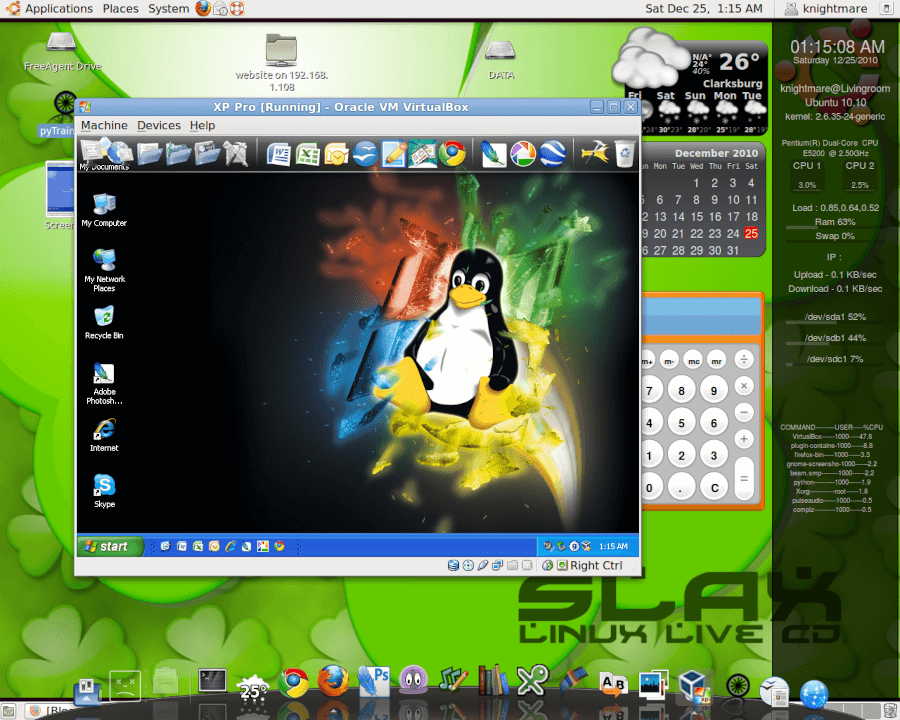In VirtualBox Manager, click New. Enter the name for your virtual machine and select the type. VirtualBox Installation 1. Download the Windows 10 ISO. First off, head over to the Windows 10 download page. If you are a Windows user, MS will prompt you to download the Media Creation Tool. Oracle VM VirtualBox Base Packages - 6.1.26. Freely available for Windows, Mac OS X, Linux and Solaris x86 platforms under GPLv2: Platform. Windows Installer. Solaris 10 5/08 and later or Solaris 11. Note: This may be obvious for most of you, but your host operating system should be 64-bit to run 64-bit guest operating systems in VirtualBox. If VirtualBox has no 64-bit option on Windows 10, then you can try the solutions on this page to fix the problem. Methods: Make sure that “Intel Virtualization Technology” and “VT-d” are enabled. Windows 10 Pro Host 64-bit only supports 32-bit OS. Reported by: jesusemarquezz: Owned. If issues get first addressed in the VirtualBox forums, a lot more eyes.
There are a lot of practical reasons to set up an OS like Windows 10 in a VM rather than using it as a native installation. If you have to deal with files you can’t trust, need to test multiple OS installations on the same system, or need access to the operating system without wanting to use it as a daily driver, using it a VM offers access to its features and capabilities without worrying about needing to keep the OS installation around long-term. Luckily, setting up Windows 10 in a VM isn’t particularly difficult.
Note: While this guide uses VirtualBox, it is not the only free VM software available. VMWare Workstation Player is another option. On Mac, there are solutions like VMWare Fusion and Parallels, but, VMWare Fusion has no near-term plans to support x86 architecture VMs on M1 solutions. Parallels has explicitly shipped software that does support x86 VMs on M1 systems.VMWare has announced that Linux, not Windows, is its priority as far as Mac support is concerned.
VirtualBox Installation
1. Download the Windows 10 ISO
First off, head over to the Windows 10 download page. If you are a Windows user, MS will prompt you to download the Media Creation Tool before allowing you to download an OS image. You can use this tool to create an ISO file locally, or you can follow these additional instructions if you want to download the ISO manually without being forced to grab the tool first.
2. Create a new virtual machine
Go to the VirtualBox website, and download the latest version of Oracle’s free, open source software. Go through the installation process, and then launch the application. Press the “New” button, and name your virtual machine. Make sure your “Type” is set to “Microsoft Windows,” and your “Version” is set to “Windows 10.” Just make sure you match the x64 version with a 64-bit VM, and the x86 version with a 32-bit VM.
3. Allocate RAM
Now, you need to decide how much RAM you want to allocate for this VM. For the x86 version, you’ll need at least 1GB of RAM. For the x64 version, you’ll need 2GB. I have 16GB of RAM in my desktop, so I decided that 4GB was right for my configuration. Whatever you decide, just make sure you stay in the green. If you allocate too much RAM, you’ll end up with serious performance issues.
4. Create a virtual drive
Next, you need to create a virtual drive. Microsoft says that 16GB is the minimum space needed for the 32-bit version, but 20GB is required for the 64-bit version. I decided on a 50GB virtual drive on my desktop, but feel free to make it as large as you need. Just be sure that you have enough space on your actual hard drive to handle the size of your virtual drive. Depending on what you intend to do with the OS, you may want to allocate more or less storage. Applications installed to a VM should be assumed to require the same amount of “real” storage that their standard installations would.
5. Locate the Windows 10 ISO

Now, go into the settings for this virtual machine, and navigate to the “Storage” tab. Click the disc icon with a green plus next to “Controller: SATA.” Click “Choose disk,” and then locate the Windows 10 ISO you downloaded earlier.
6. Configure video settings
Before you jump in and start installing Windows 10, move over to the “Display” tab. You can configure how much video memory you’re willing to allocate to the virtual machine, but make sure you stay in the green. You can also toggle on 3D acceleration if you like.
7. Launch the installer
With all of that setup finished, press the “Start” button in VirtualBox, and begin the Windows 10 installation process. Follow the instructions on the screen, and you’re well on your way.
8. Install VirtualBox guest additions
Once you’re at the Windows 10 desktop, you’ll need to install all of the proper drivers for VirtualBox. In the VirtualBox UI, go to “Devices,” and then select “Insert Guest Additions CD image.” Navigate to that disc image in Windows Explorer, and run the installer. Once you’ve gone through the entire process, you’ll need to reboot the VM.

9. You’re ready to rock
Virtualbox Host Windows 10 32 Bit
Back at the desktop, you can finally use full-screen mode at the proper resolution. In the VirtualBox menu, go to “View,” and select “Switch to Fullscreen.” For the most part, this is now the same experience you’d have running it natively. Enjoy yourself, and feel free to poke around all the new features.
Windows 10 Download
Now Read: